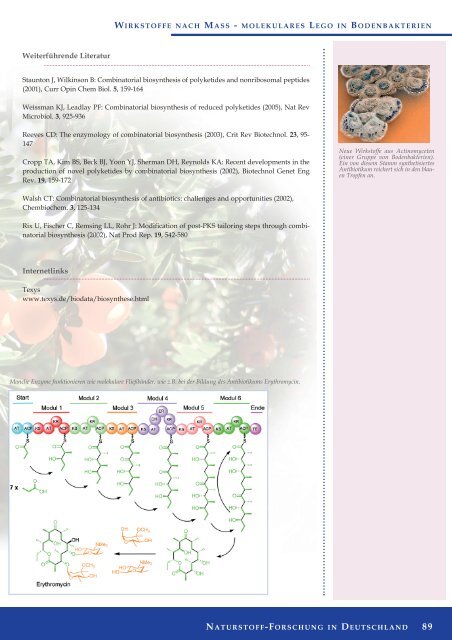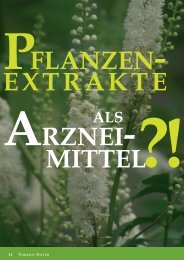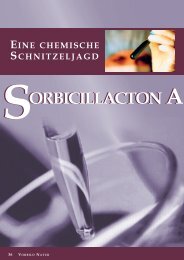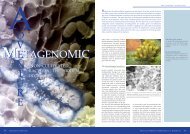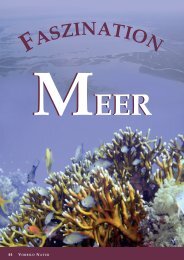Vorbild Natur - Dechema
Vorbild Natur - Dechema
Vorbild Natur - Dechema
Erfolgreiche ePaper selbst erstellen
Machen Sie aus Ihren PDF Publikationen ein blätterbares Flipbook mit unserer einzigartigen Google optimierten e-Paper Software.
Weiterführende Literatur<br />
Staunton J, Wilkinson B: Combinatorial biosynthesis of polyketides and nonribosomal peptides<br />
(2001), Curr Opin Chem Biol. 5, 159-164<br />
Weissman KJ, Leadlay PF: Combinatorial biosynthesis of reduced polyketides (2005), Nat Rev<br />
Microbiol. 3, 925-936<br />
Reeves CD: The enzymology of combinatorial biosynthesis (2003), Crit Rev Biotechnol. 23, 95-<br />
147<br />
Cropp TA, Kim BS, Beck BJ, Yoon YJ, Sherman DH, Reynolds KA: Recent developments in the<br />
production of novel polyketides by combinatorial biosynthesis (2002), Biotechnol Genet Eng<br />
Rev. 19, 159-172<br />
Walsh CT: Combinatorial biosynthesis of antibiotics: challenges and opportunities (2002),<br />
Chembiochem. 3, 125-134<br />
Rix U, Fischer C, Remsing LL, Rohr J: Modification of post-PKS tailoring steps through combinatorial<br />
biosynthesis (2002), Nat Prod Rep. 19, 542-580<br />
Internetlinks<br />
Texys<br />
www.texys.de/biodata/biosynthese.html<br />
W IRKSTOFFE NACH M ASS - MOLEKULARES L EGO IN B ODENBAKTERIEN<br />
Manche Enzyme funktionieren wie molekulare Fließbänder, wie z.B. bei der Bildung des Antibiotikums Erythromycin.<br />
Neue Wirkstoffe aus Actinomyceten<br />
(einer Gruppe von Bodenbakterien).<br />
Ein von diesem Stamm synthetisiertes<br />
Antibiotikum reichert sich in den blauen<br />
Tropfen an.<br />
N ATURSTOFF-FORSCHUNG IN D EUTSCHLAND 89


